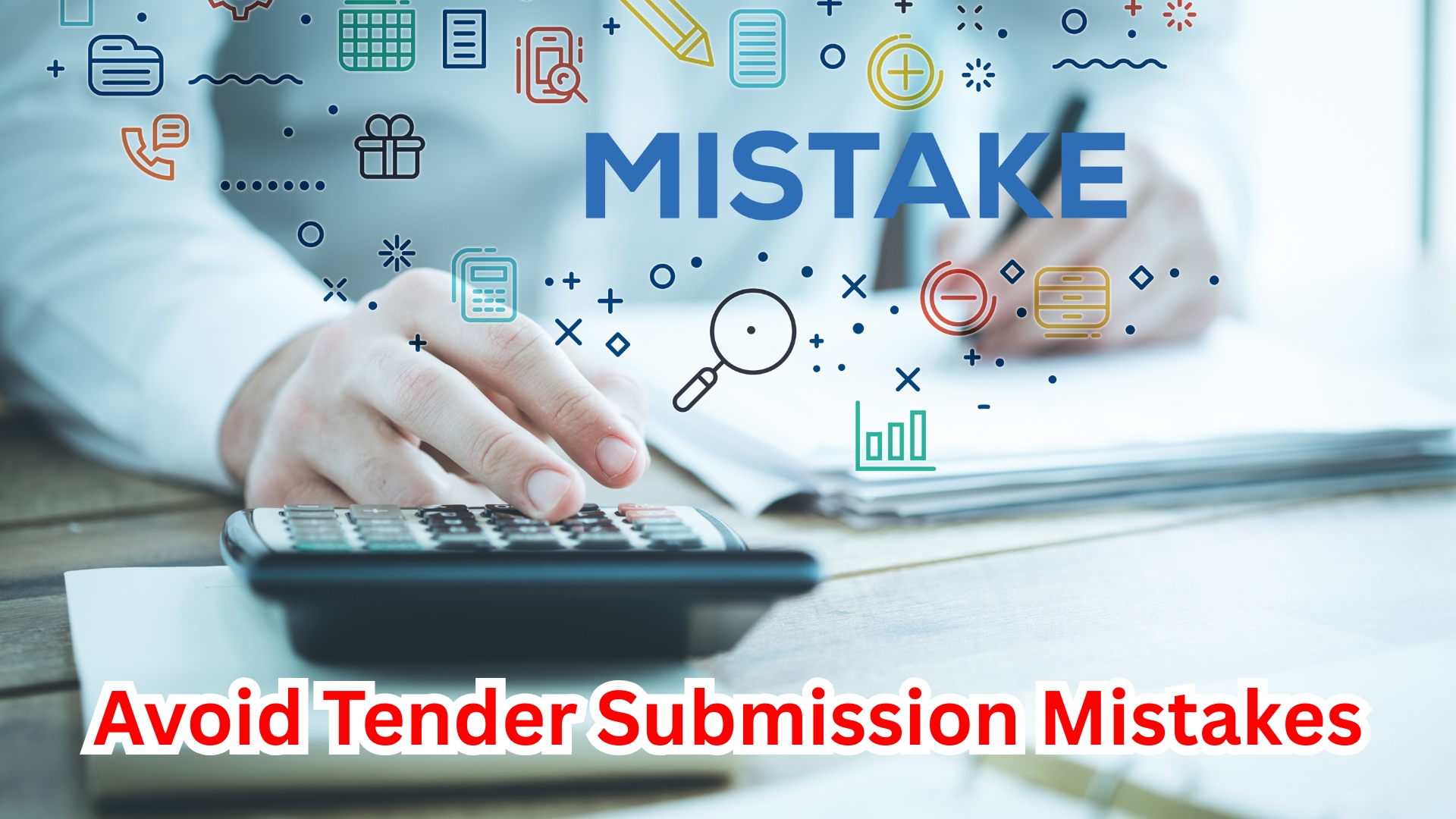How to Avoid Common Tender Submission Mistakes: A Step-by-Step Guide
In India’s fast-evolving procurement landscape—especially with the rise of e-tendering portals like GeM, CPPP, and various state platforms—businesses across sectors are aggressively bidding for tenders to win lucrative government and private contracts. Yet, thousands of bids are rejected daily due to avoidable errors during the tender submission process.
Whether you’re a startup, MSME, manufacturer, trader, contractor, or service provider, this guide walks you through the most common tender submission mistakes and how to avoid them—ensuring your bids remain eligible, competitive, and successful.

Why Tender Submissions Get Rejected
Before diving into the step-by-step guide, it’s important to understand why so many tenders get disqualified:
- Failure to meet eligibility criteria
- Incorrect or missing documentation
- Errors in technical or financial proposals
- Late submissions or portal issues
- Misunderstanding of tender conditions
Let’s break down these issues and fix them—step by step.
Step 1: Understand the Tender Requirements Thoroughly
🔍 Read the Tender Document Word for Word
Do not skim the tender notice. Every clause, annexure, deadline, and requirement matters. If the tender document is 50 pages long, read all 50. Focus especially on:
- Eligibility criteria (turnover, experience, certifications)
- Submission format and file requirements
- Technical vs. financial bid instructions
- Evaluation method (L1, QCBS, etc.)
- Tender-specific clauses (Earnest Money Deposit, exemptions, penalties)
📌 Pro Tip: Create a checklist while reading the document to track all compliance points.
Step 2: Prepare All Mandatory Documents in Advance
🧾 Commonly Required Documents:
- Digital Signature Certificate (DSC) – Mandatory for e-submission.
- PAN & GST Registration – Must match the entity name used in the bid.
- Udyam (MSME) Certificate – For exemptions on EMD or special benefits.
- Turnover and IT returns – Typically last 3 years.
- Experience/Work Orders – To prove prior successful work.
- Authorization Letters (if bidding on behalf of others).
- OEM Authorization – Especially important for manufacturers bidding through GeM.
❗ Tip: Missing or uploading expired documents is a top reason for rejection.
Step 3: Avoid Errors in Technical Proposal
The technical proposal should clearly reflect how your business:
- Meets the technical requirements
- Has relevant experience and team capacity
- Understands the scope of work
💡 Tips to Get It Right:
- Follow the format exactly as prescribed.
- Use company letterheads where required.
- Include page numbers and proper annexure referencing.
- Avoid copy-paste templates—customize per project.
Step 4: Be Precise in the Financial Bid
The financial bid should:
- Quote the price in the exact unit format (per item, per kg, per sq. meter, etc.)
- Be exclusive or inclusive of GST based on instructions
- Include no hidden charges
- Be signed and formatted exactly as asked
❌ Caution: Submitting a wrong price format or miscalculating tax often leads to disqualification or even blacklisting.
Step 5: Mind the Submission Deadline
⏳ Time Management:
- Submit at least 24 hours before the deadline.
- GeM, eProcurement, and state portals often have peak-time slowdowns.
- Technical failures during upload are not accepted as excuses.
📌 Pro Tip: Save partial progress frequently to avoid losing work on e-portals.
Step 6: Know the Common Portal Pitfalls (GeM, CPPP, etc.)
🖥️ GeM Portal Tips:
- Validate uploaded documents to avoid “Unsupported format” errors.
- Do not exceed file size limits.
- Ensure products are live in the right categories.
🖥️ CPPP Tips:
- Only valid DSCs work (Class 3 or token-based).
- Java compatibility or browser-related issues can cause last-minute disruptions—test your setup in advance.
Step 7: Proofread and Cross-Verify Everything
Before you hit “submit”, double-check:
- All file names and formats
- The Tender ID is correct
- You’ve attached every required document
- The company name and credentials are consistent across all files
Step 8: Ask for Clarification (When Needed)
If something is unclear:
- Use the pre-bid query window
- Email the tendering authority within the specified time frame
⚠️ Don’t assume—clarify in writing.
Step 9: Learn from Past Tender Results
Study who won previous tenders and their quoted prices. This helps you:
- Price competitively
- Identify successful bidding patterns
- Benchmark your technical proposal
Sources: CPPP, eProc portals, GeM, private tender trackers
Bonus: Frequently Asked Questions (FAQs)
❓ What happens if I miss a tender deadline?
You are disqualified, no exceptions. Set multiple reminders and internal deadlines.
❓ Can MSMEs get exemption from EMD?
Yes, with a valid Udyam Registration or NSIC certificate.
❓ Do I need a DSC for every portal?
Yes. Class 3 DSC is mandatory for most government portals.
❓ How can I increase my chances of winning?
- Follow instructions to the letter.
- Price wisely (especially in L1 evaluations).
- Don’t overpromise—stay realistic and back claims with documents.
Final Words: Precision = Power
Avoiding tender mistakes isn’t difficult—it’s about being meticulous, well-prepared, and timely. A single overlooked detail can cost you lakhs in lost opportunities.
By following this guide, you’re positioning your business to win tenders, build credibility, and grow in India’s competitive procurement ecosystem.
Need Help with Tender Submission or GeM Registration?
👉 Contact TenderJunction LLP today — your trusted partner for end-to-end tender consultancy in India.
📞 Call: +91-9898570353
📧 Email: info@tenderjunction.in

